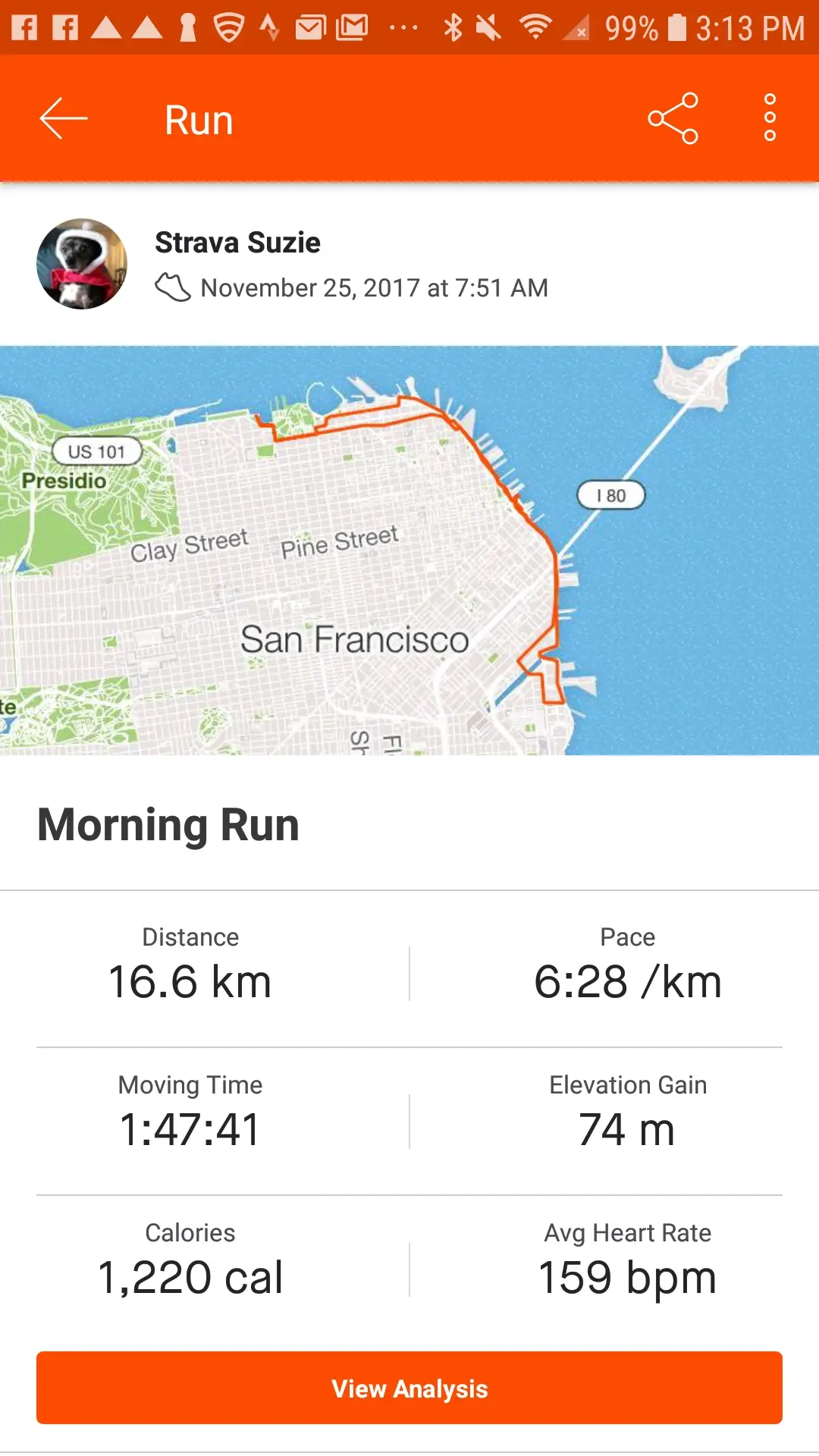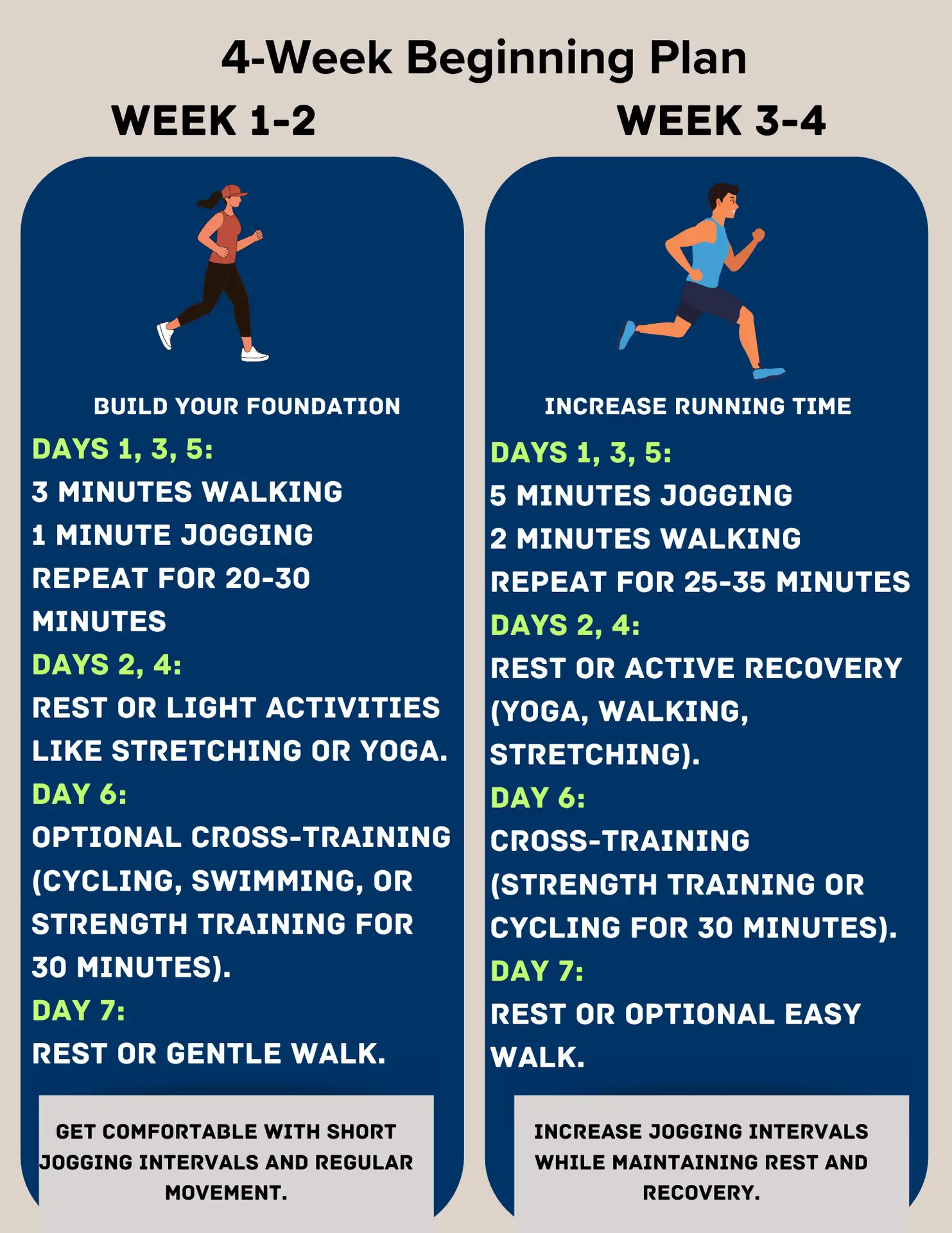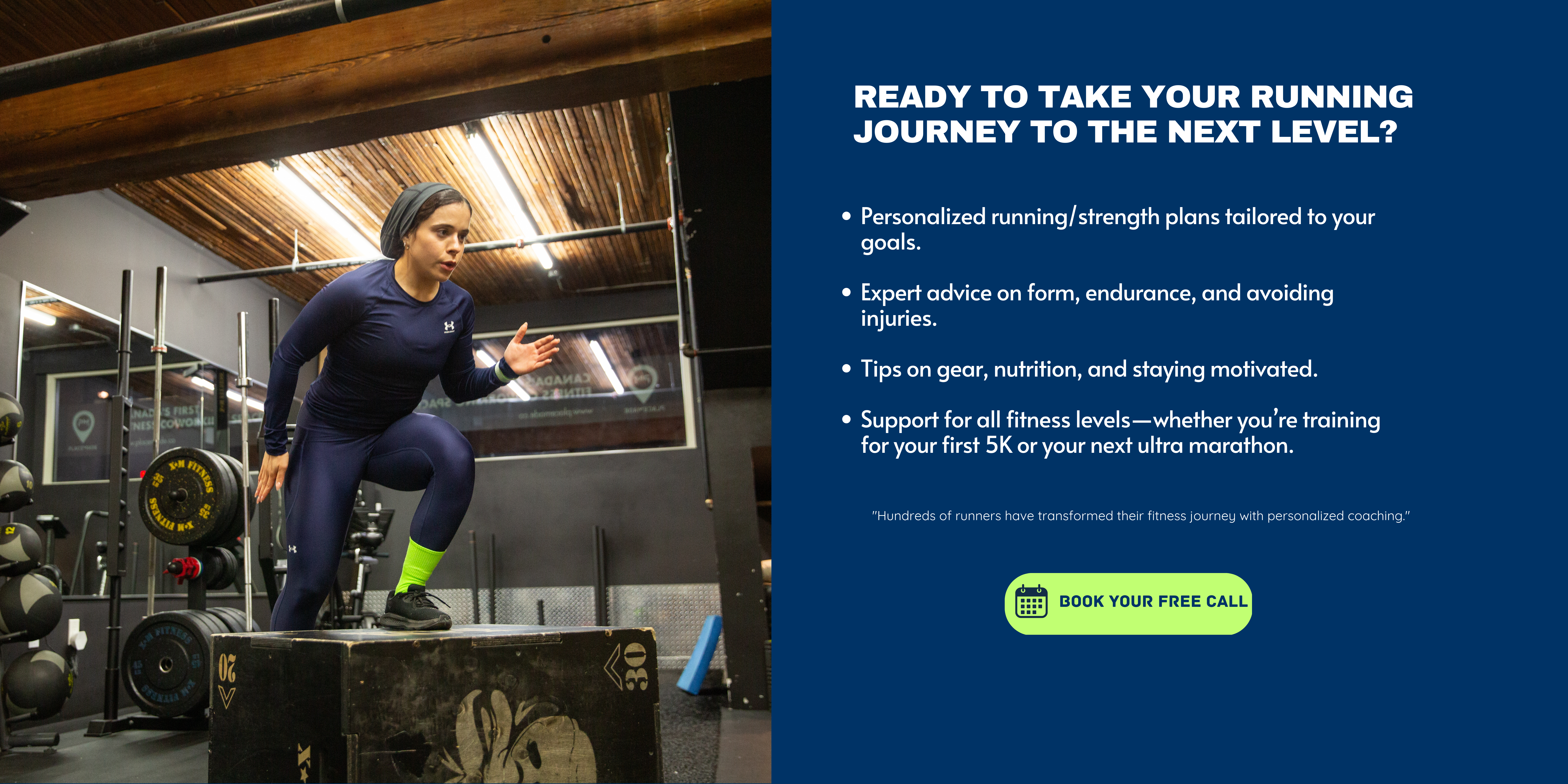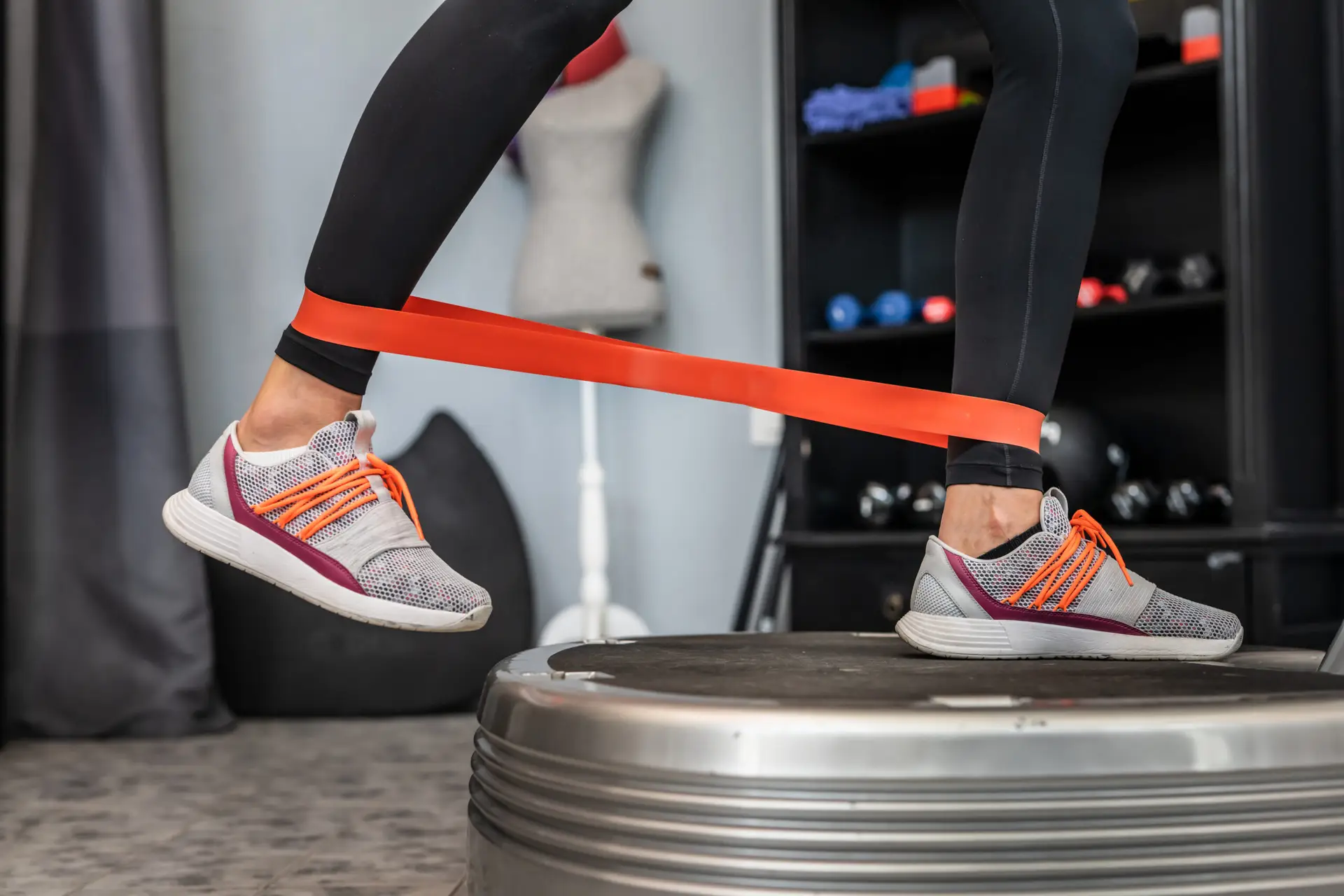The Ultimate Beginner’s Guide to Running: Start Your Running Journey Today
Running is one of the most effective ways to improve your fitness, lose weight, and boost your overall health. Whether you’re new to running or looking to get back into it, starting a beginner running routine can be simple and rewarding.
This guide will walk you through the key steps for getting started with running, from setting goals to choosing the right gear and avoiding common beginner mistakes. Let’s take that first step toward making running part of your life!
- Running is a highly effective way to improve your cardiovascular health, mental well-being, and overall fitness.
- Start with small, achievable goals to build consistency and prevent injury as a beginner runner.
- Invest in the right gear, especially proper running shoes, to make your running experience more comfortable and avoid common injuries.
- Follow a structured 4-week beginner running plan that gradually increases running intervals while incorporating rest and recovery days.
- Avoid common beginner mistakes like overtraining, skipping warm-ups, and using improper footwear to stay injury-free.
- Stay motivated by setting a running routine, tracking progress, and rewarding yourself as you reach milestones.
Table of Contents
Why You Should Start Running
Running offers a host of benefits for both your physical and mental well-being:
- Improves Cardiovascular Health: Running strengthens your heart and lungs, helping to increase endurance and stamina over time.
- Burns Calories and Supports Weight Loss: Running is one of the most efficient ways to burn calories and manage your weight.
- Boosts Mental Health: Running can reduce stress, boost mood, and even alleviate symptoms of anxiety and depression.
- Builds Endurance: Regular running improves your stamina, allowing you to run longer distances as you progress.
Getting Started: Setting Realistic Running Goals
The key to successful beginner running is starting small and building gradually. Here’s how to set realistic running goals:
- Start with Short Sessions: Aim for 10-15 minutes of walking and light jogging, increasing time as you get comfortable.
- Track Your Progress: Use a running app like Strava or keep a journal to log your distance, pace, and how you feel after each run.

Strava stats can help you track progress with pace, zone training and endurance performance
- Celebrate Small Milestones: Did you run for 5 minutes without stopping? That’s progress! Celebrate these small wins to stay motivated.
What You Need Before You Start: Essential Running Gear

Running shoes, posture and clothing are essential to keeping your running injury-free and efficient
While running is simple, having the right gear can make a big difference:
- Gait Analysis: Not sure what shoes are right for you? A gait analysis can help identify your foot strike and running mechanics, ensuring you get the perfect shoes for your needs. Book a Gait Analysis with One of Our Coaches Here to receive expert recommendations tailored to your running style.
- Running Shoes: Invest in shoes designed specifically for running to protect your feet and joints. There are many factors that determine the right shoes for you such as your drop, your saddle, amount of cushioning, running surface, etc. Check out this guide on how to choose the right shoes for you. Correct running shoes also helps maintain a good running technique and optimal posture.
- Breathable Clothing: Choose lightweight, moisture-wicking materials to stay comfortable during your run. Our top recommendation would be Under Armour’s compression shirts that are designed to keep you cool as you run.
- Running Accessories: A fitness tracker or running watch can help you monitor your progress. Whether you are team Apple or Garmin, it doesn’t really matter!
- Hydration: Staying properly hydrated is essential for runners to perform at their best and recover effectively. Make sure you’re drinking water consistently throughout the day, and about 30 minutes before your run, drink around 8 ounces of water to ensure you’re hydrated but not overly full. During shorter runs (under 60 minutes), you likely won’t need additional hydration, but for longer runs, it’s important to sip water every 20-30 minutes. For runs lasting more than 90 minutes, consider an electrolyte drink to replenish sodium and other electrolytes. After your run, rehydrate by drinking 16-24 ounces of water or a recovery beverage for every pound lost through sweat, helping your body recover faster.
- Proper Socks: Socks is one of the most underrated accessories for running. Investing in good running socks such the Balegas’s prevent blisters and help cushion your feet.
Beginner Running Plan: A Simple 4-Week Routine

img source [thebodymindcoach]
Here’s a basic beginner running plan to help you build endurance gradually:
Weeks 1-2: Walk and Jog Intervals
-
- Walk for 3 minutes, jog for 1 minute. Repeat for 20-30 minutes.
- Focus on maintaining a consistent, comfortable pace.
Weeks 3-4: Increase Jogging Time
-
- Jog for 5 minutes, walk for 2 minutes, and repeat.
- Aim for 30 minutes, 3-4 times a week.
Pro Tip: Don’t worry about speed—consistency is more important during your first few weeks. Make sure you properly warm up before your run and stretch after. This will make a big impact on your progress.
Common Beginner Running Mistakes to Avoid
Starting a running routine is exciting, but it’s easy to fall into common mistakes that can lead to injuries, frustration, or burnout. Avoid these pitfalls to make your journey smoother and more enjoyable:
1. Overtraining Too Soon
One of the most common mistakes beginners make is trying to do too much, too soon. You might feel energized and want to push your limits, but overtraining can lead to injury and fatigue. Running puts stress on your muscles, joints, and tendons, and if you don’t give your body enough time to adapt, injuries like shin splints, stress fractures, or tendinitis can develop.
How to Avoid It: Stick to a gradual running plan that balances running with rest days. Increase your running time or distance by no more than 10% per week, and listen to your body if you start feeling aches or discomfort.
2. Skipping Warm-Ups and Cool-Downs
Running without proper preparation or recovery is a recipe for injury. Skipping a warm-up can leave your muscles stiff and prone to strain, while neglecting a cool-down after your run can lead to tightness and soreness, making future runs less comfortable.
How to Avoid It: Spend at least 5-10 minutes warming up with dynamic stretches like leg swings or lunges before each run. Check out our article on the best dynamic warmup you can do before your run. After your run, take another 5-10 minutes to cool down with static stretches, focusing on your hamstrings, calves, quads, and hip flexors to reduce soreness and promote recovery.
3. Wearing the Wrong Shoes
Your running shoes play a huge role in preventing injuries and ensuring comfort. Wearing improper footwear—whether it’s worn-out shoes or ones that aren’t suited to your running gait—can lead to blisters, joint pain, or even long-term issues like plantar fasciitis.
How to Avoid It: Invest in a good pair of running shoes that match your foot type and gait. If you’re unsure, consider getting a gait analysis with a running expert to help you choose the right shoes. Replace your running shoes every 300-500 miles or whenever they start showing signs of wear.
4. Ignoring Rest and Recovery
Many new runners believe that running more often will lead to faster improvements. However, without proper rest and recovery, your body doesn’t have time to repair itself, which can lead to injury and burnout. Rest days are just as important as running days to allow your muscles to recover and grow stronger.
How to Avoid It: Schedule at least one or two rest days per week and make use of active recovery activities like walking, stretching, or yoga to stay limber. Remember, recovery is when your body adapts to the training load and becomes stronger.
5. Not Listening to Your Body
Pain and discomfort are not badges of honor. Many beginners tend to push through pain, thinking it’s part of getting stronger, but ignoring early warning signs can lead to serious injuries that may set you back for weeks or months.
How to Avoid It: Pay attention to your body’s signals. If you feel sharp pain or persistent discomfort, it’s time to stop and assess the issue. Consult a healthcare professional if the pain persists and don’t hesitate to take extra rest days if your body needs them.
How to Stay Motivated in Your Beginner Running Journey
Staying motivated can be tough, but here are some tips to keep running:
- Create a Running Schedule: Set specific times for your runs each week. Morning or evening runs can help build consistency.
- Run with Friends or Join a Group: Running with others can keep you accountable and make the experience more enjoyable.
- Set Rewards for Milestones: Treat yourself to new gear or a healthy snack after achieving your running goals.
Conclusion
Starting a running routine doesn’t have to be difficult. With the right goals, gear, and plan, you’ll improve with every step. Keep going at your own pace, and soon, you’ll see progress in both your physical fitness and mental well-being. Now is the perfect time to lace up your shoes and hit the pavement. Your running journey begins today—one step at a time!



